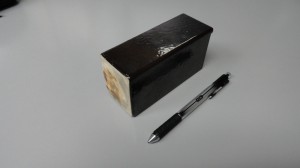Transformer Blocking Shows Its Age
MIDWEST’s Engineering Department has a shelf with miscellaneous parts that we use for training. One of the items is a very simple 2” X 2” X 5” porcelain block. This is from a 1000 kva, 13,200 volt primary to 480/277 volt secondary, dry type power transformer. The transformer was one of seven new transformers installed in the 1960s at a customer’s commercial facility. MIDWEST’s service included cleaning and inspecting the transformers. They ranged in size from 500 kva 120/208 to 2000 kva 480/277 volts. The transformers were very clean from service by many companies over the years. All the test results were good. Previous maintenance notes classified all the transformers as “Excellent condition for continued service.” This facility handled critical data processing and the “results of failure” would include lose of power to data processing equipment. MIDWEST’s physical inspection revealed the winding blocking for one of the transformers was loose. Much of the upper blocking was so loose it could be removed. The porcelain block in our training room was taken from one of the 1000 kva dry transformers after it was replaced two years later. But based solely on the test results and a cursory visual inspection, the transformers looked great. The only problems were defective fans. But a focused inspection, TBLR in our jargon, a “top to bottom, left to right” hard focused inspection revealed very brittle insulation and loose blocking that could not be secured. The transformers ‘might’ have lasted another 20 years, but not reliably and this owner wanted reliability. So based on the physical condition, not the test results, the customer initiated a 5 year plan to replace the transformers and some of the associated secondary switchgear. This is another example of the value of experience when servicing power transformers, old, used, new, GE General Electric, Siemens, or Cutler Hammer, it doesn’t make a difference.
